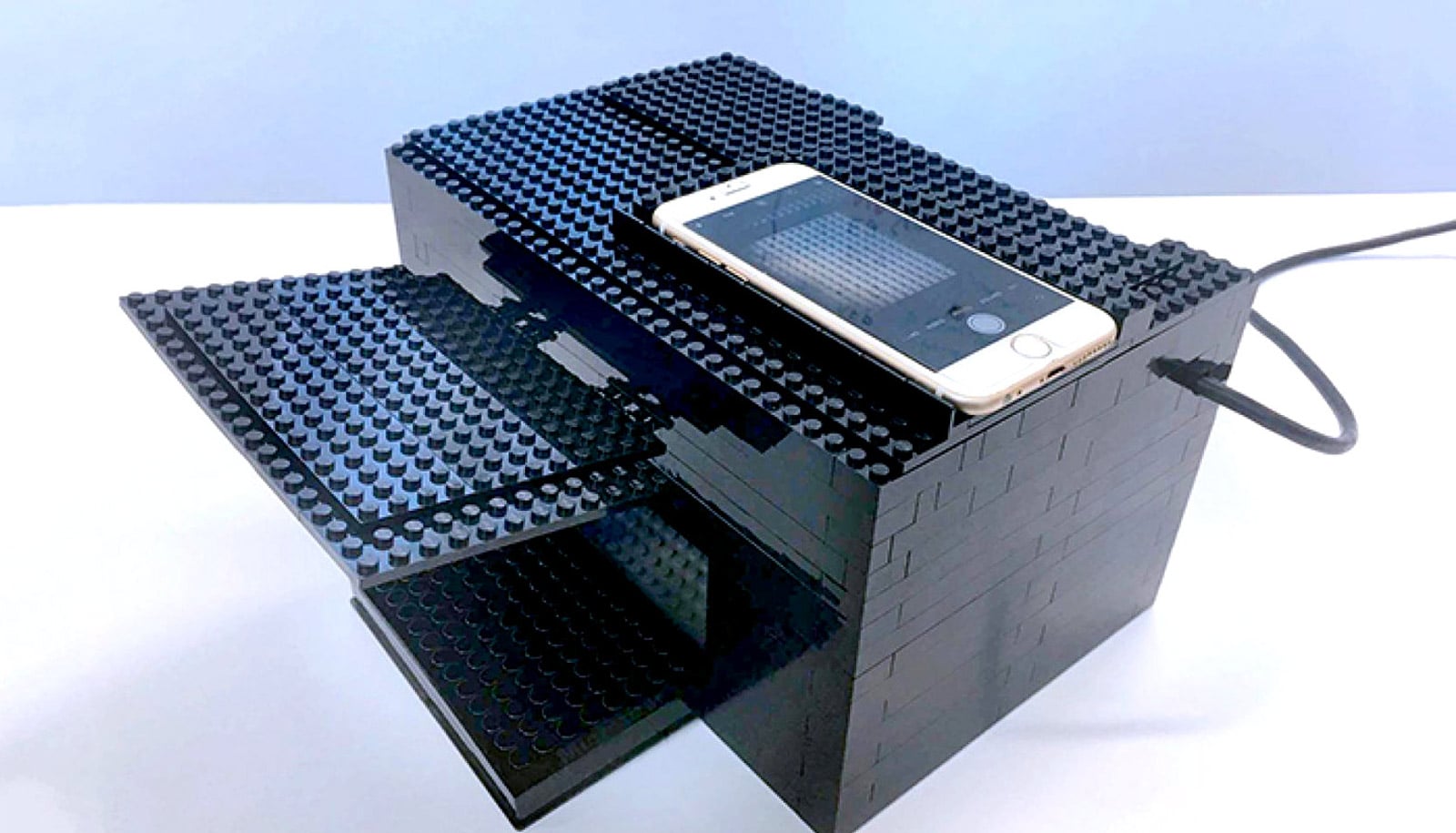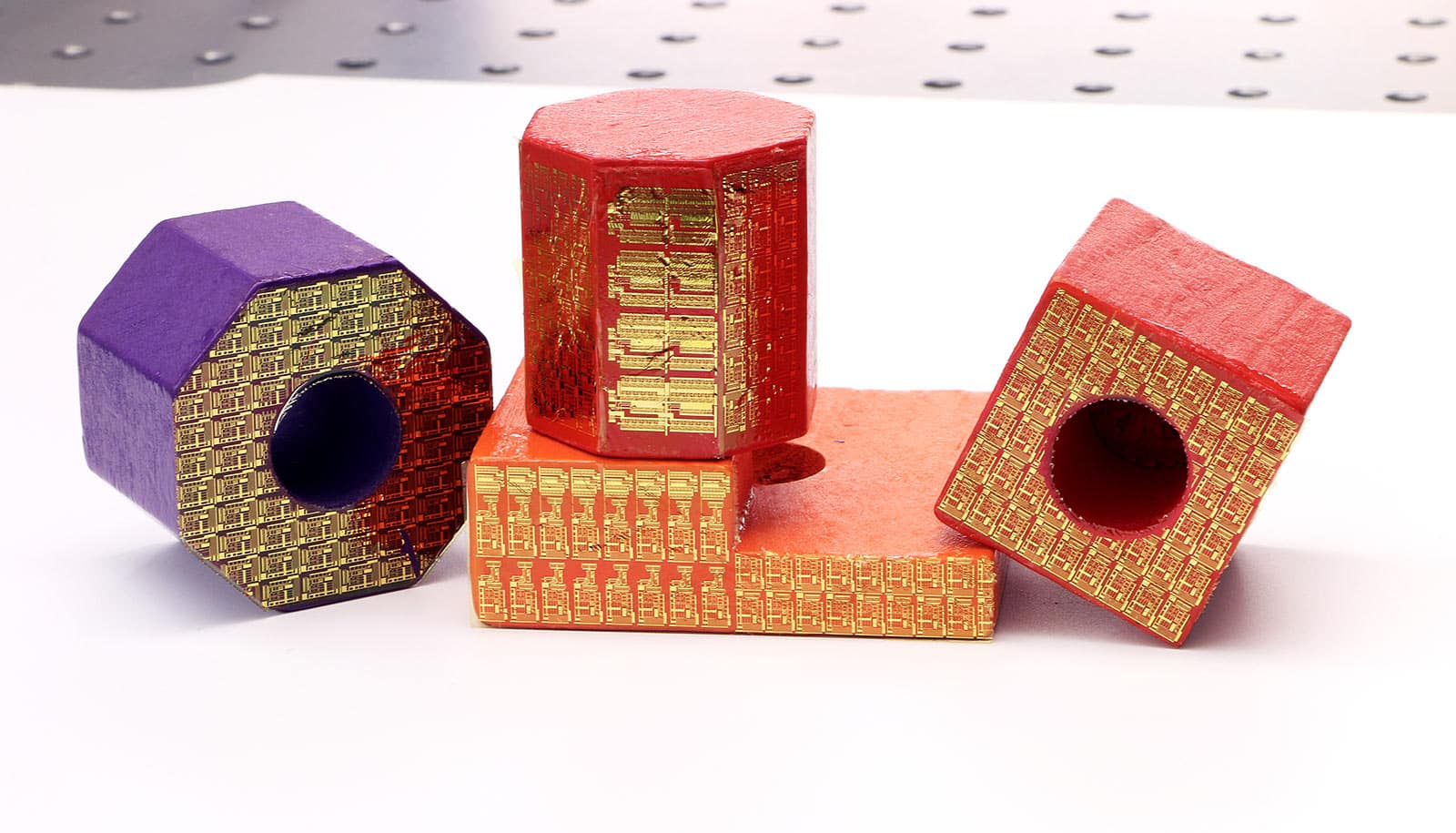Scientists have refined a gas-sniffing device so that it can detect poisonous toxins and explosives in less than half a second.
The laser-based method could be a security device in airports or monitor for pollutants and toxins in the environment. The findings build upon a method researchers developed last year that detects gases in about four or five minutes.
The current device, which researchers describe in a paper in Nature Photonics, uses three lasers to shorten the detection time significantly.
“The big advantage is that you can do this detection with a much simpler, much more compact, much more robust device, and at the same time, you can do this detection much faster and with much less acquisition time,” says lead author Steven Cundiff, professor of physics at the University of Michigan.
“This is critical for making the device practical. If you’re monitoring the environment, you need to do it reasonably quickly because of fluctuations in the environment. You don’t want to wait five minutes to figure out if something has a toxin in it,” Cundiff says.
Gas ‘barcodes’
Gases have certain wavelengths that lasers can read. The first device used a method called “multidimensional coherent spectroscopy,” or MDCS, which uses ultrashort laser pulses to read these wavelengths like barcodes. A gas’s particular wavelength identifies the type of gas it is.
Many gases have a rich spectra for certain wavelengths, or colors, of light—although the “colors” may actually be in the infrared, so not visible the human eye. These spectra make them easily identifiable. But this becomes difficult when scientists try to identify gases in a mixture.
In the past, scientists relied on checking their measurements against a catalog of molecules, a process that requires high-performance computers and a significant amount of time.
Cundiff’s previous method used MDCS with another method called dual-comb spectroscopy to shorten detection time to that four or five minutes. Frequency combs are laser sources that generate spectra consisting of equally spaced sharp lines.
These lines act as rules to measure the spectral features of atoms and molecules, identifying them with extreme precision. In dual-comb spectroscopy, the lasers send pulses of light in different patterns in order to quickly scan for the fingerprints of gases.
Now, Cundiff and research fellow Bachana Lomsadze have added another layer of laser detection to pare down that detection time even further, using a method that they have dubbed “tri-comb spectroscopy.” This is also the first time researchers have demonstrated tri-comb spectroscopy, Cundiff says.
The researchers added a third laser and paired the lasers with software that can program the pattern of light pulses that the lasers emit. The lasers are synchronized with each other to generate light pulses so that the lasers are constantly scanning to identify gases.
How it works
Here’s how it works: Two lasers send light pulses in the same direction which combine into a single beam. This beam passes through a gas vapor, and after the beam passes through the vapor, it is combined with the beam from a third laser.
Then, the final beam hits a signal detector that measures the spectra of the gas mixture and identifying the gases. While this demonstration used “home-built” lasers that are not particularly compact or robust, equivalent commercially available lasers measure about 10 inches by four inches by two inches.
Similar to their work last year, the researchers tested their method in a vapor of rubidium atoms that contained two rubidium isotopes. The frequency difference between absorption lines for the two isotopes is too small to observe using traditional approaches to MDCS, but by using combs, they were able to resolve these lines and assign the spectra of the isotopes based on how the energy levels were coupled to each other. Their method is general and can identify chemicals in a mixture without previously knowing the makeup of the mixture.
Cundiff hopes to implement the device in existing fiber optic technology, and control the laser pulses with software. That way, the software can be adapted to particular environments.
“This is one step toward the goal of software reconfigurable spectroscopy,” Cundiff says. “This is similar to software reconfigurable radio technology, in which the same hardware can be used for different applications, such as a cell phone or an FM receiver, simply by loading different software.”
Source: University of Michigan



